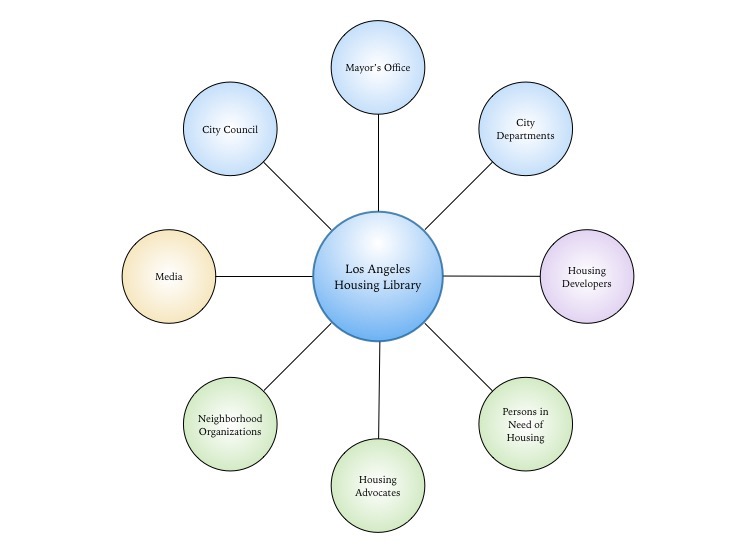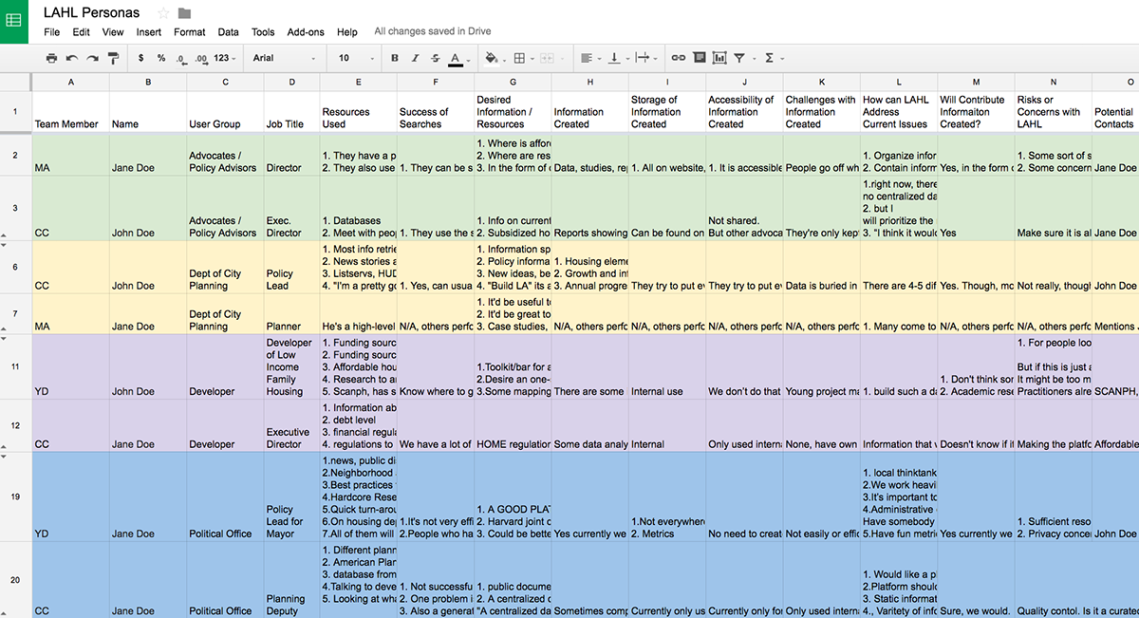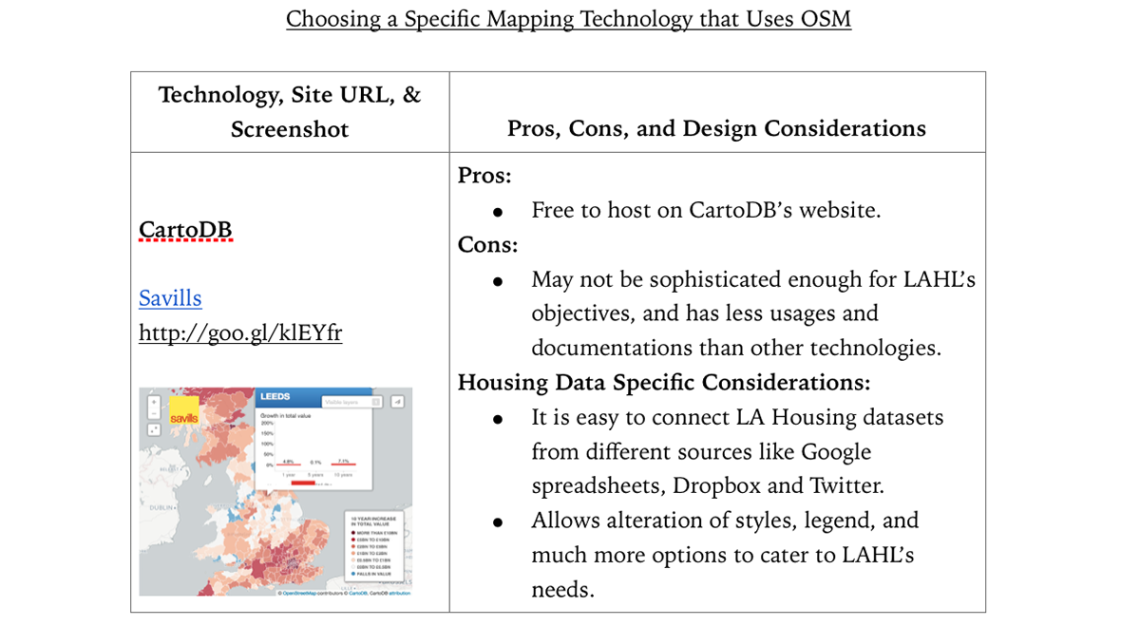This project was performed as UX Research fieldwork, which fulfilled partial graduation requirements for the Master of Information Science degree. Information Science students were partnered with real world clients to help solve an organization’s information needs. Our project partnered us with the Housing Authority of the City of Los Angeles (HCIDLA, formerly the Los Angeles Housing Department), which is currently developing a Think Tank focused on Los Angeles housing related information. The working title of this Think Tank is the Los Angeles Housing Library (LAHL).
There are many agencies and working groups across the Los Angeles government that frequently perform studies and produce reports on housing issues. However, there is no central location for the submission, access, or archiving of this information. Many studies are therefore reproduced at the taxpayers’ expense, resource constrained officials can make uninformed decisions, and/or some studies are permanently lost over time. Thus, the problem we needed help solve was how to improve the sharing of housing related information across government agencies.
Having advanced to candidacy the same year, my role was to oversee the project, serve as the client contact, and lead all qualitative research and associated deliverables. These responsibilities combined included participant recruitment, interview scheduling, development of an interview script, interview moderation, and personas.
We began by developing a research plan to help scope the project, along with defining our goals and objectives. The most important research method used for this project was qualitative interviews. We used these interviews to better understand potential LAHL users and the various ways housing information is stored, created, accessed, and collected across Los Angeles government agencies. I asked our client to put us in contact with her colleagues, who also worked on housing related issues in Los Angeles. She was able to put us in contact with a number of people from diverse professional backgrounds, which helped us identify varying needs and concerns of potential LAHL users.

I then coordinated the interviews, our team developed and iteratively updated an interview script, and we used snowball sampling (chain sampling) to recruit additional participants. While our other two group members focused on a competitive analysis, myself and one colleague performed the vast majority of the interviews by switching between interviewer and note-taker. We were ultimately put in contact with nearly 50 people working on housing related issues, and successfully conducted 38. Following completion of the interviews, we sorted and coded the notes according professions which we then analyzed for common threads and differences.

As mentioned, the other half of our team concurrently focused on the tactical research of a competitive analysis. This review examined navigation features, mapping technologies, and data submission. Our team chose to analyze fourteen different websites, which were identified through our qualitative interviews, our client’s recommendations, and input from fellow user experience professionals.
Overall, the qualitative interviews validated our client’s belief that there was a need for a platform focused on the access, storage, and collection of housing related information. However, these interviews also revealed that some potential user groups had no desire for the platform. This was most common amongst real estate developers and investors, as they already had large teams and databases focused on housing research. In contrast to this, City Council offices, city departments, and housing advocates were the groups most interested in the development of LAHL. We developed research-based personas from this analysis, which we delivered to our client for their future use in development and funding of LAHL.

As these interviews spanned across various user groups, our final recommendation was that our client perform a second round of in-depth interviews focused on the user groups most interested in platform. These interviews would help our client focus future content, data types, platform functions, and mapping features – which were also considered in our competitive analysis.
The competitive analysis produced many navigation and design considerations for LAHL: highlighting datasets, visualizing data through multiple methods, different navigation flows based on user identity, and providing open access of data to the public. This last consideration was key to future development, as it was stressed in nearly every user group we interviewed. Our review of mapping technologies demonstrated that most sites use either Google Maps or Open Street Maps (OSM). As interviews showed potential users would prefer a non-partisan and non-profit platform, we recommended HCIDLA use OSM databases for LAHL. With this in mind, we examined various sites that offer mapping options.

This project proved to be a great lesson of flexibility in research. We started by interviewing potential users in person; myself and colleague being trained in qualitative research, we wanted to see participants’ reactions in person to gauge follow-up questions. This proved to be difficult, as we were often interviewing government officials with incredibly busy schedules. We agreed to conduct telephone interviews in the event we could not find a mutually agreeable time. While we still believed in-person interviews would yield richer results, we also believed we obtained the necessary information for the preliminary research stage. The second round of research, which will require in-depth analysis, should include in-person studies.
Yet, I believe the greatest take-away from this project was learning that talking to the wrong people can still yield findings. As mentioned, we interviewed people who had no desire for the platform, but this led us to the discovery of the platform’s future users. By identifying potential user groups and those with no desire, we were able to give our client areas of future focus; ultimately demonstrating the value and necessity of research before development.
Thanks for viewing, feel free to check out some of my other projects!
